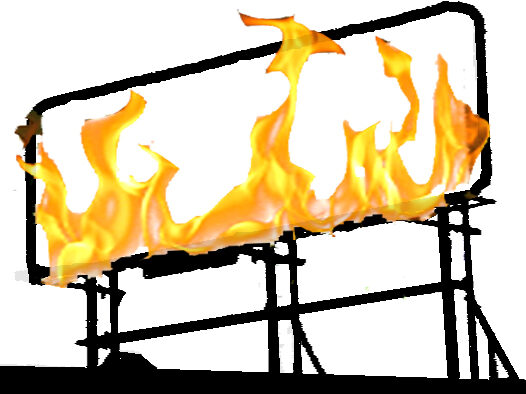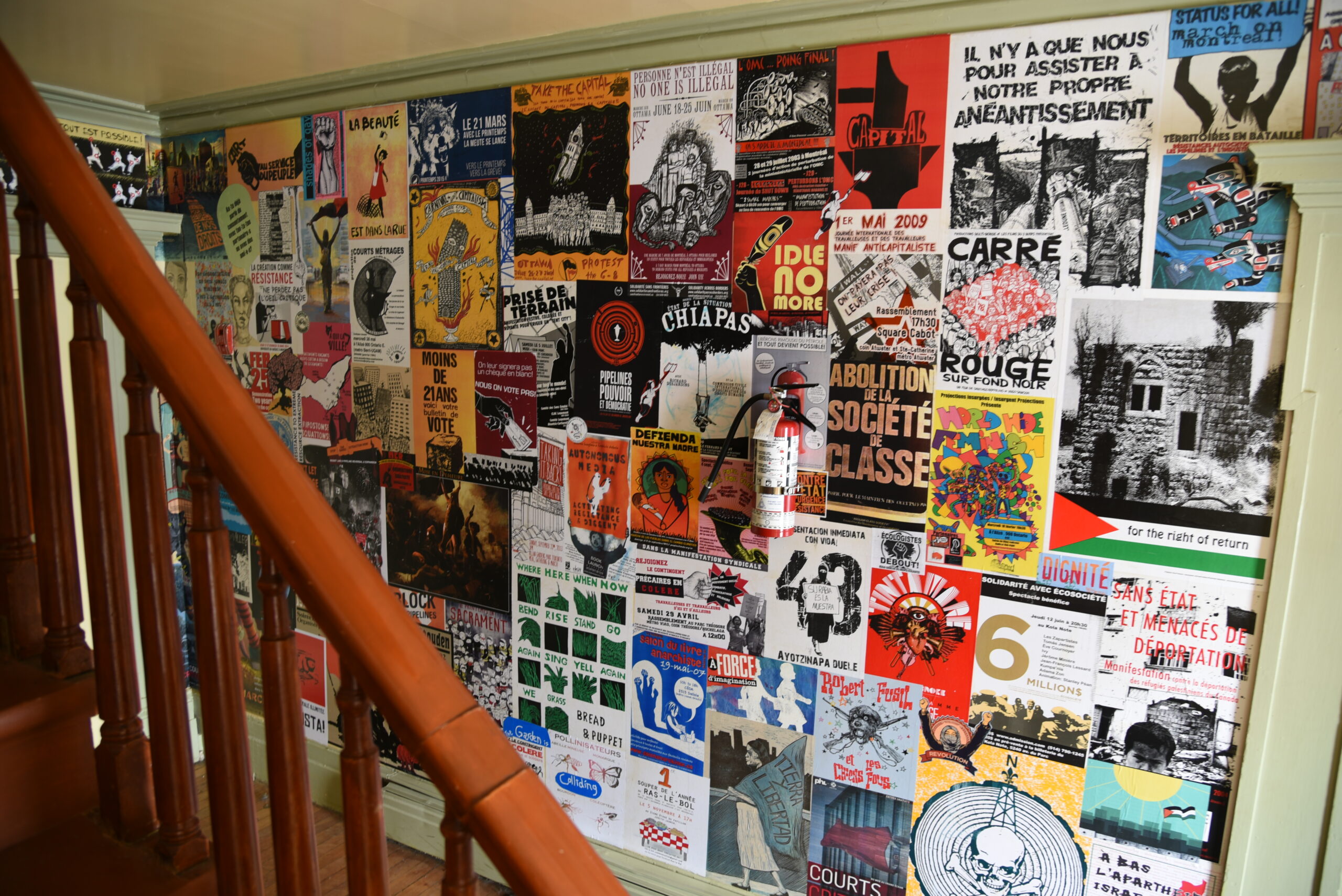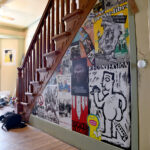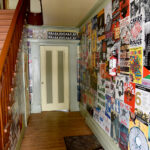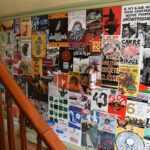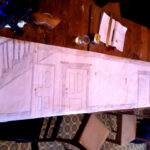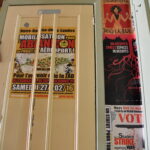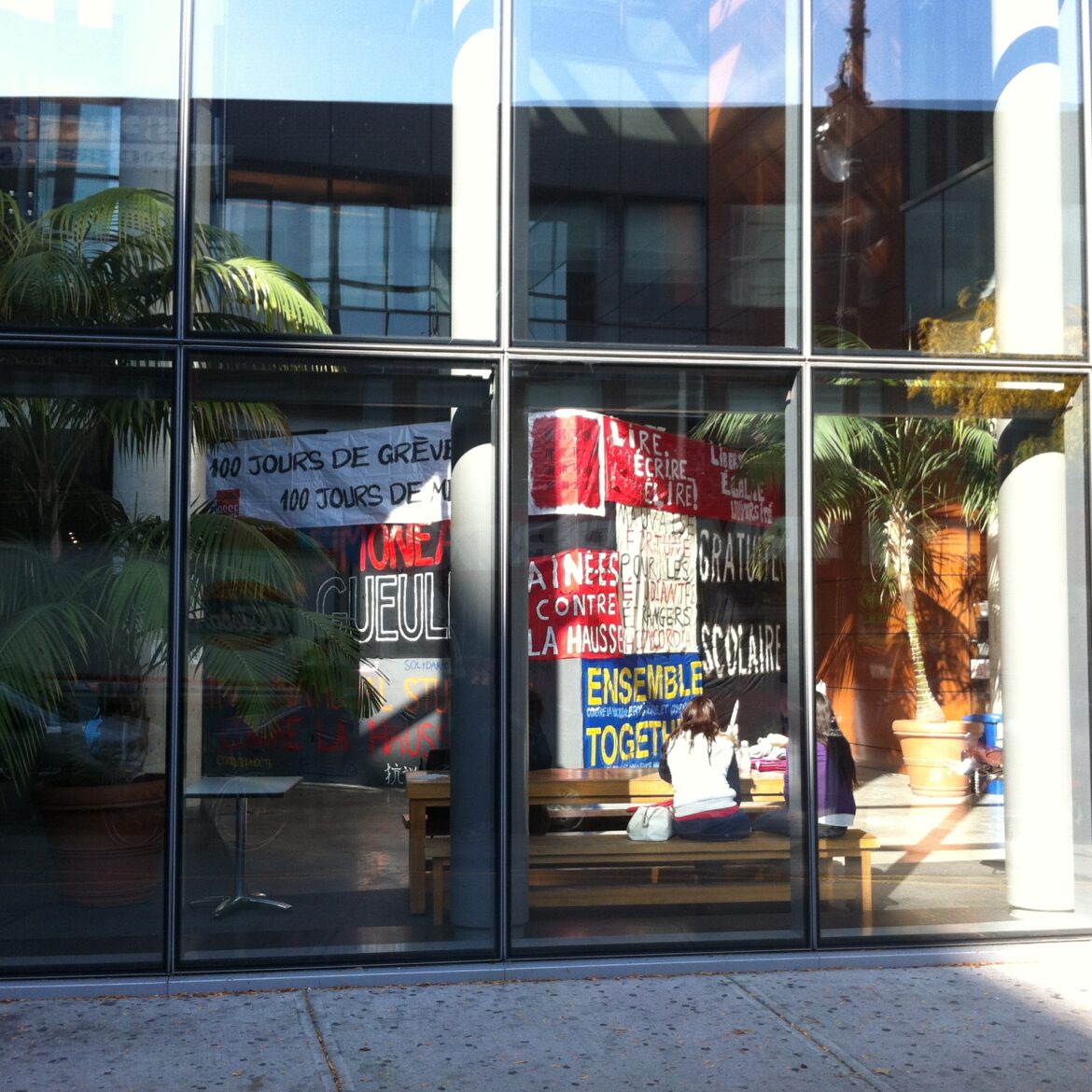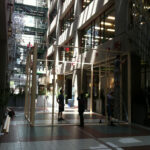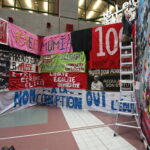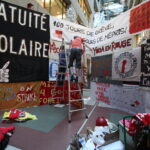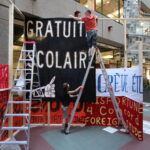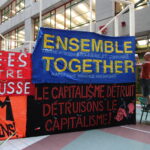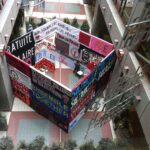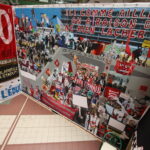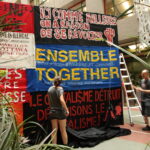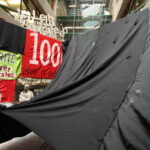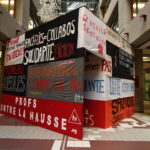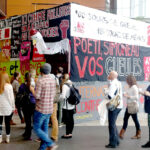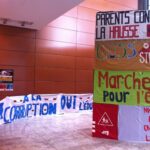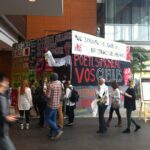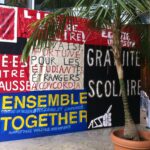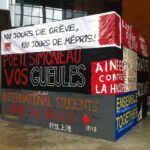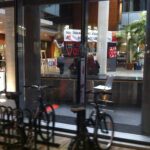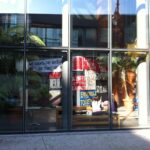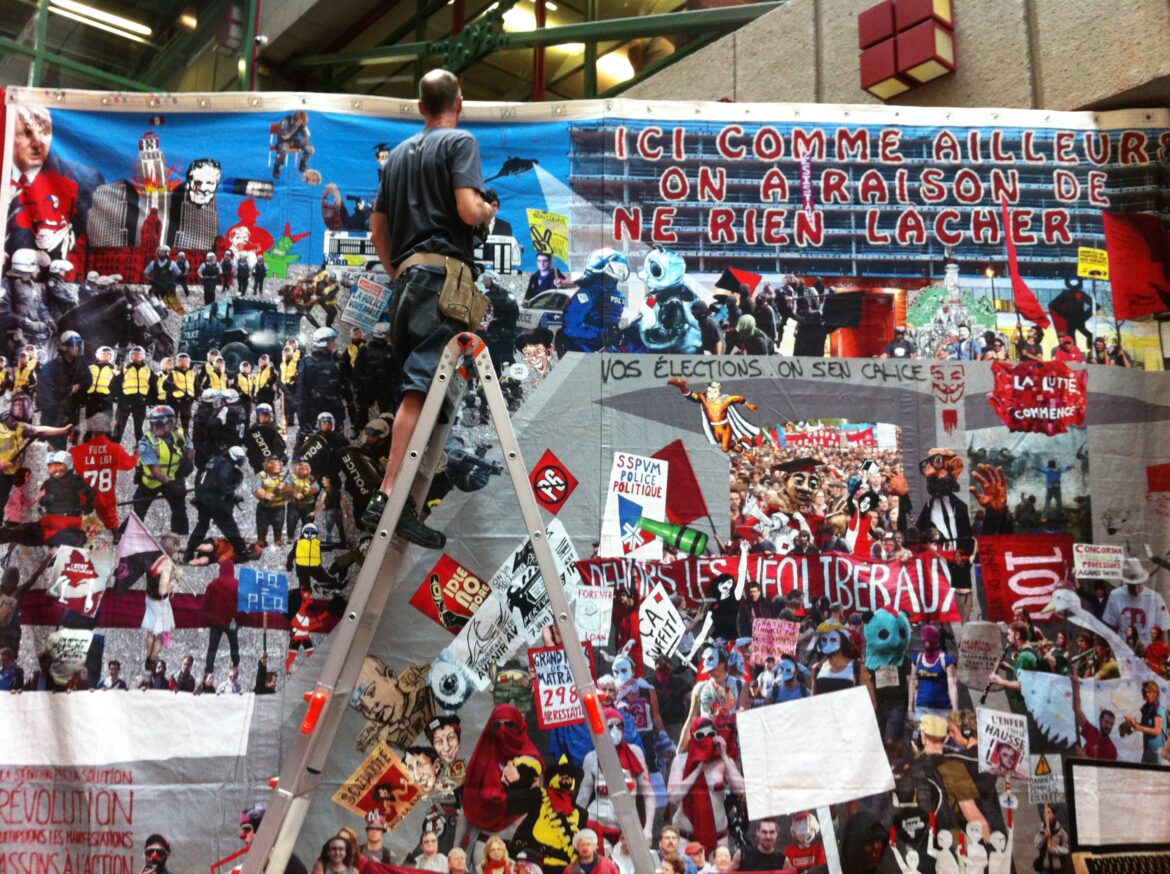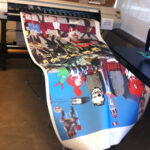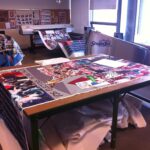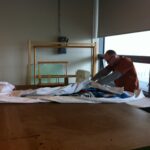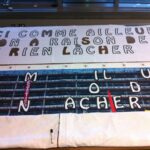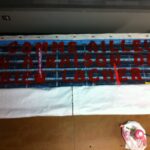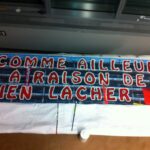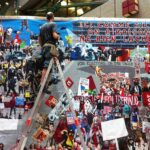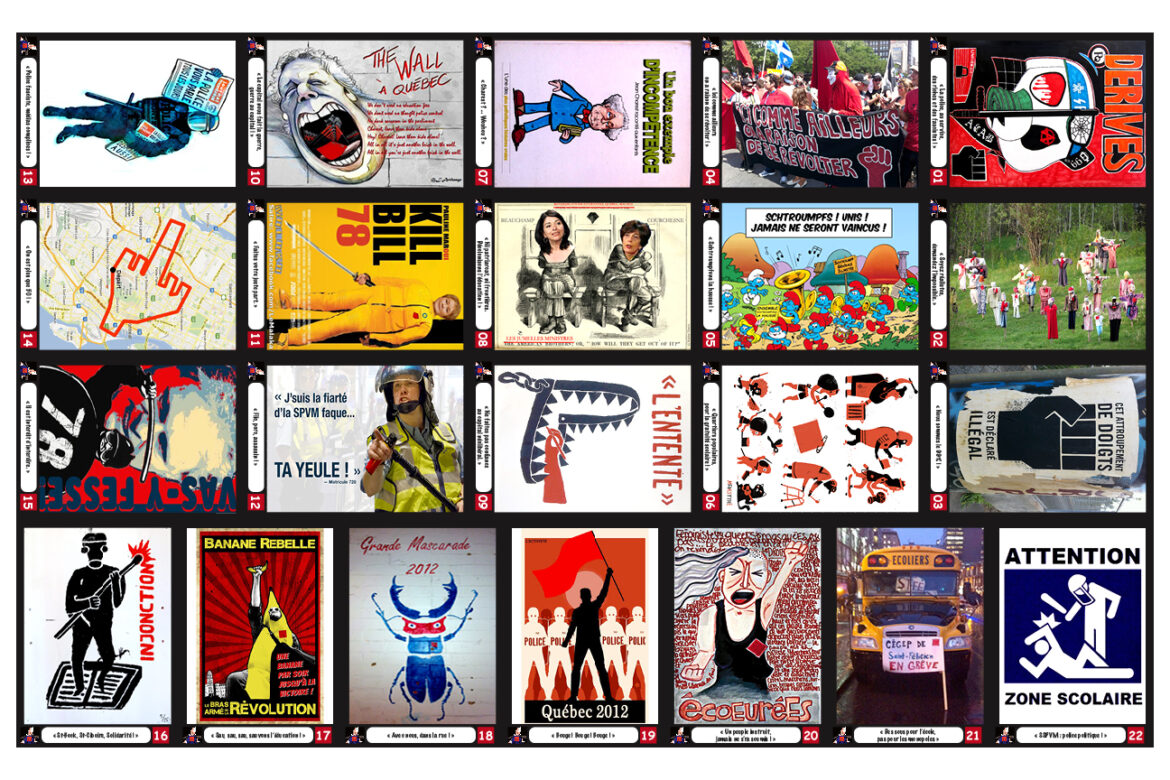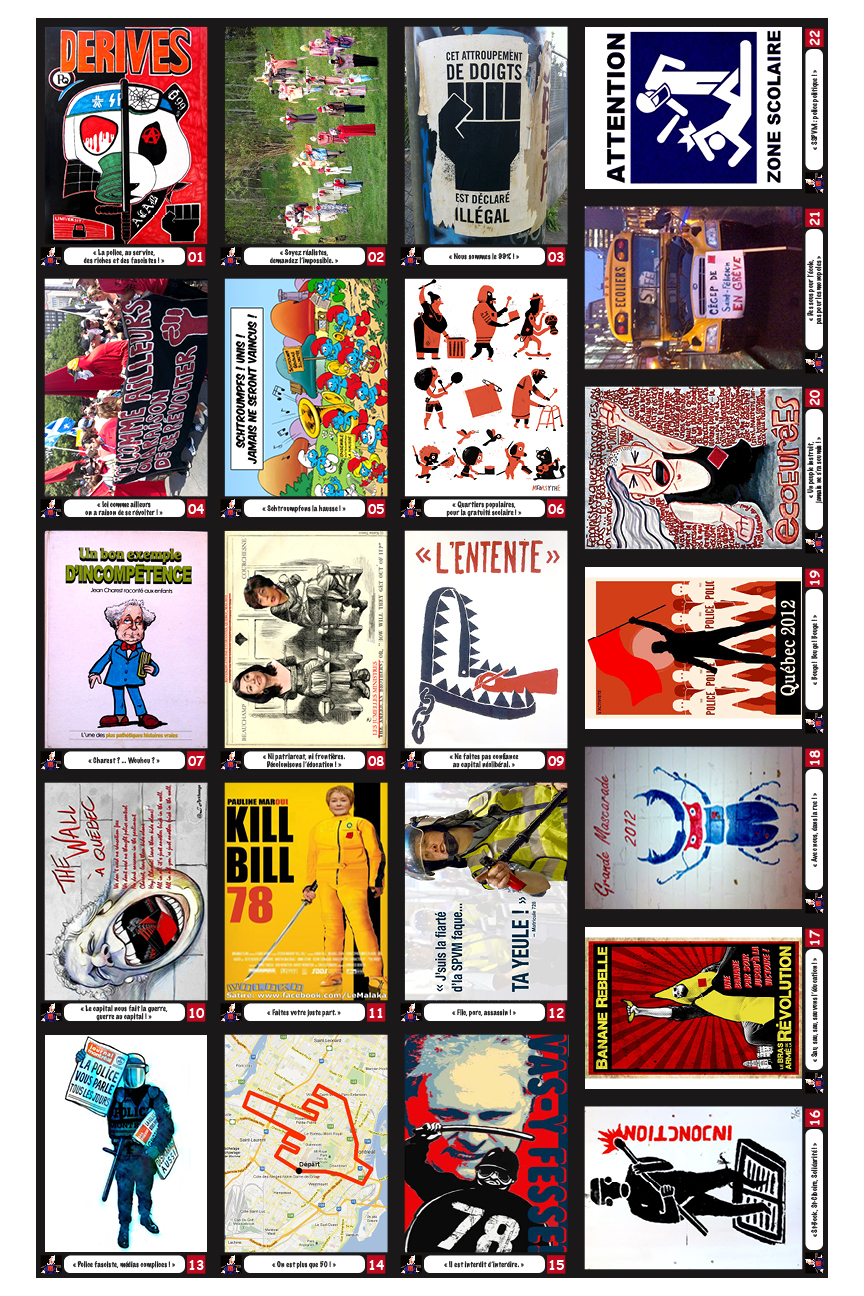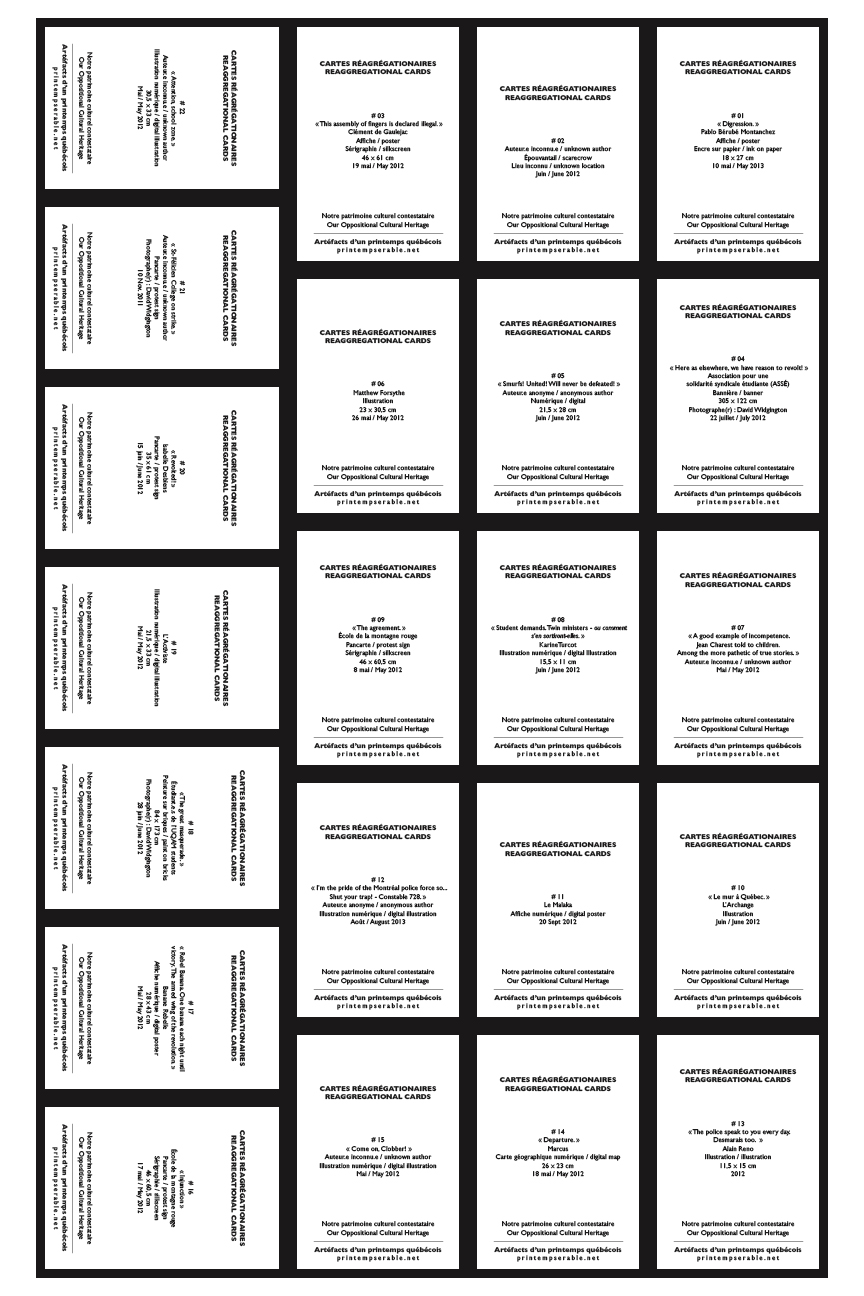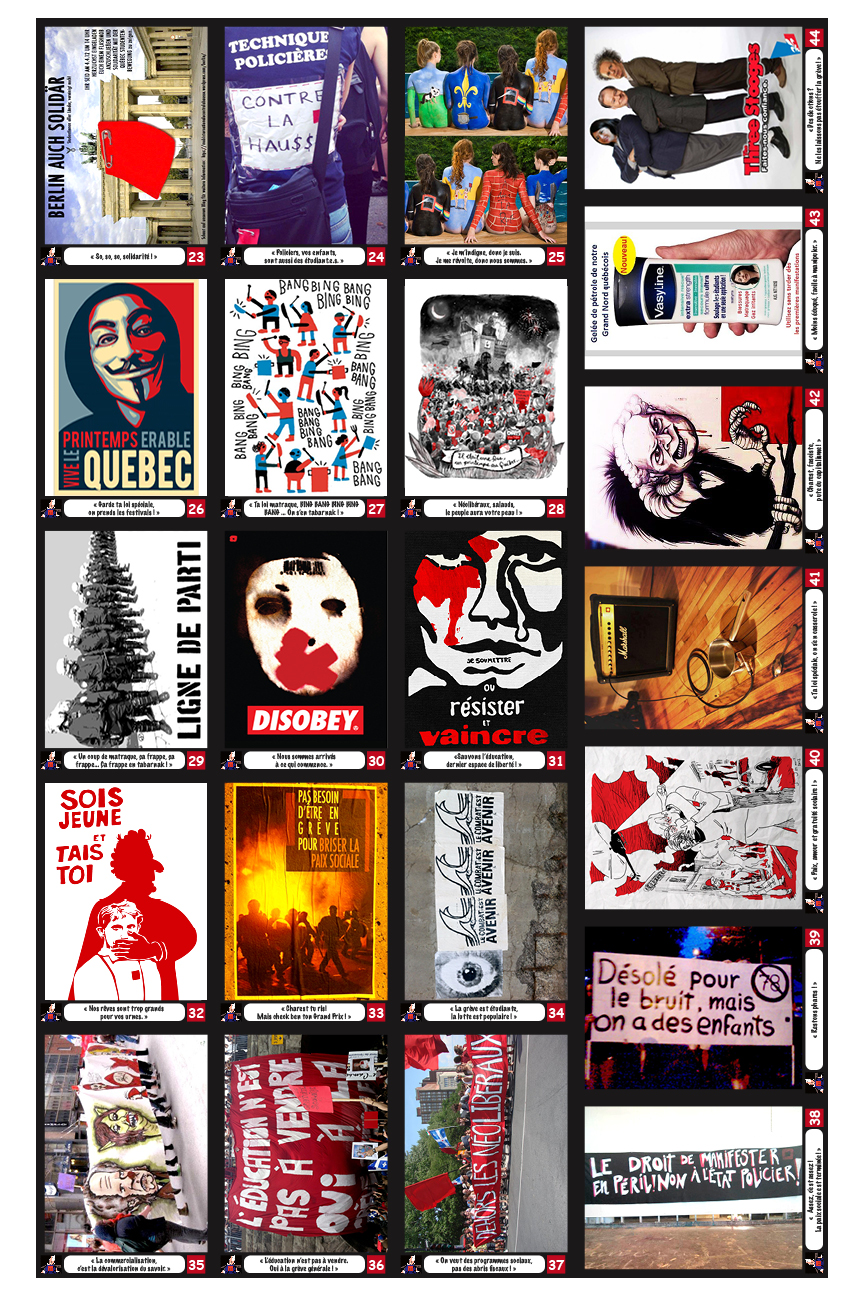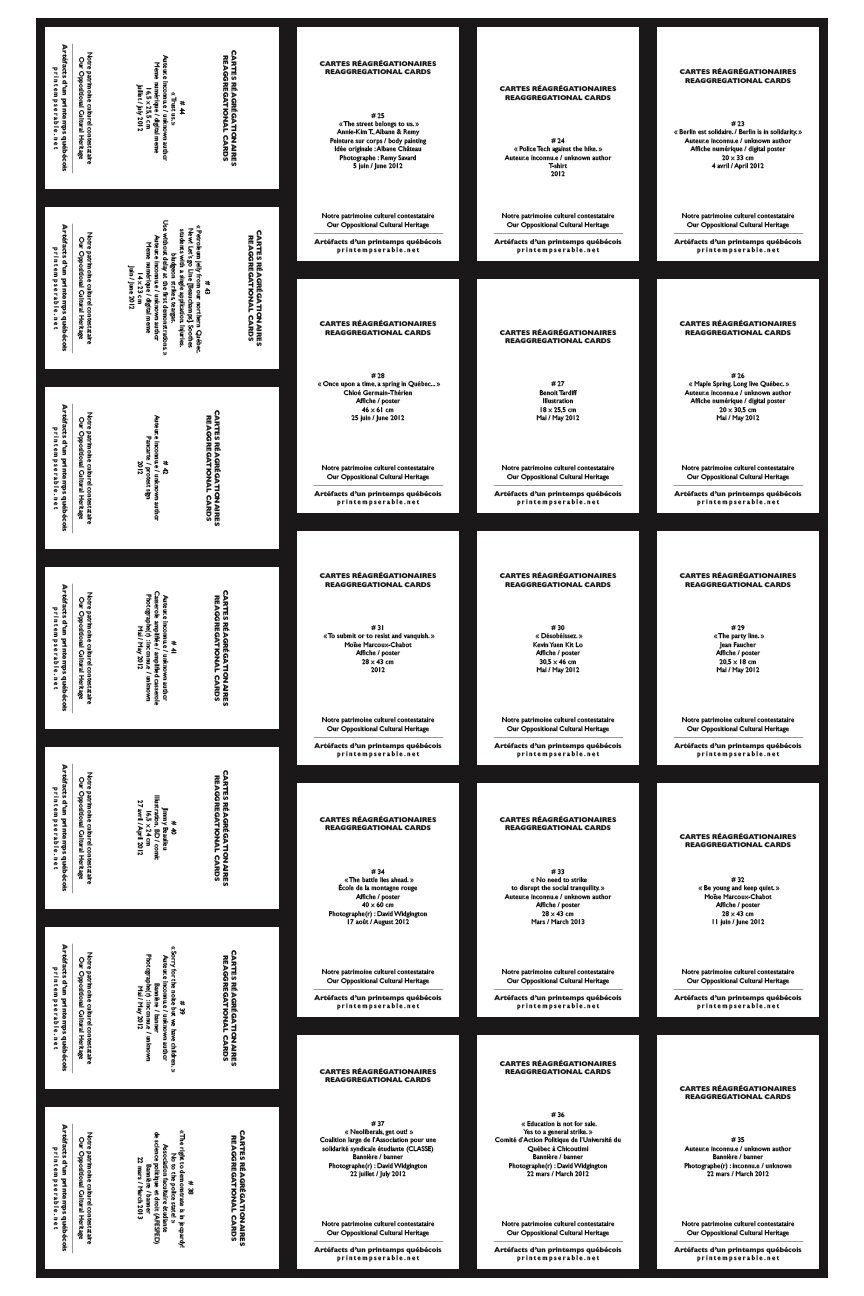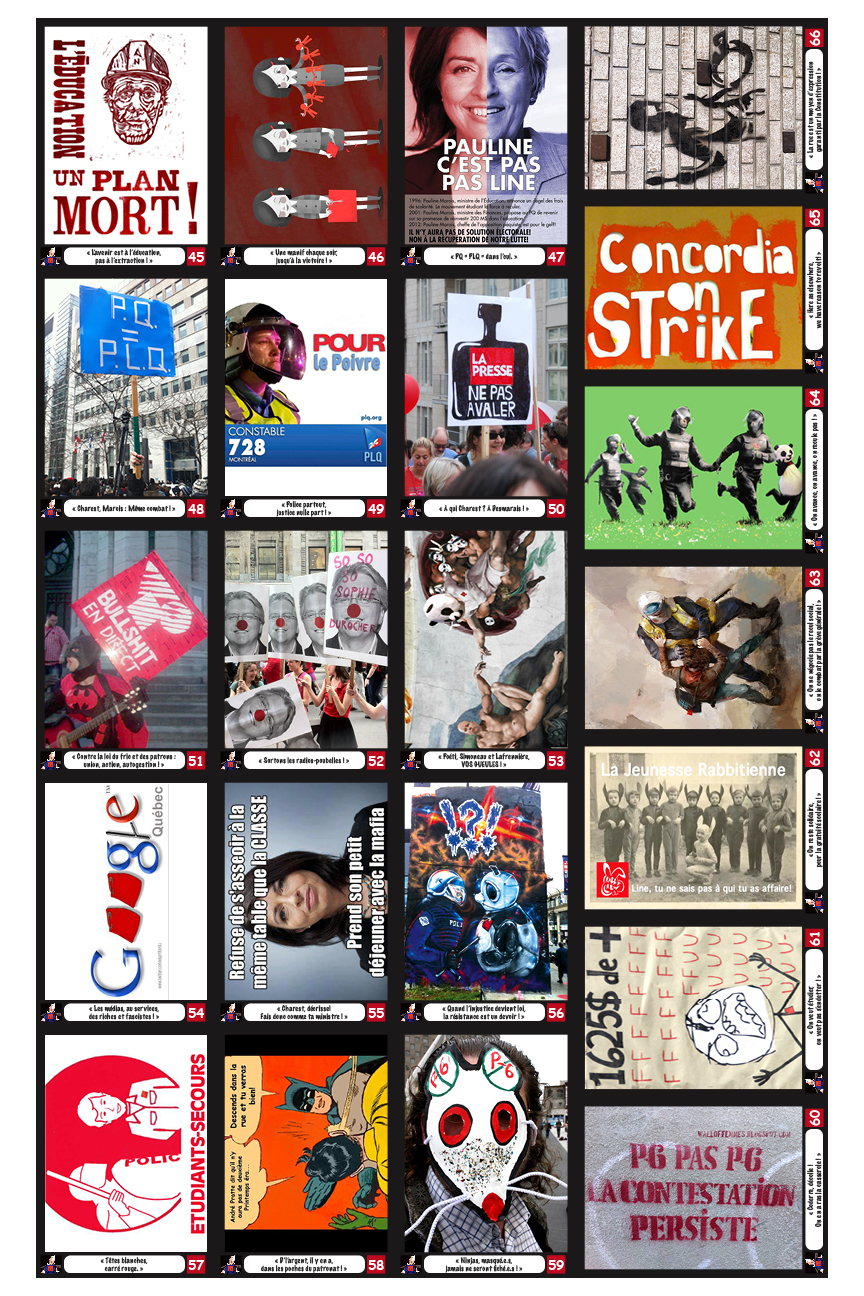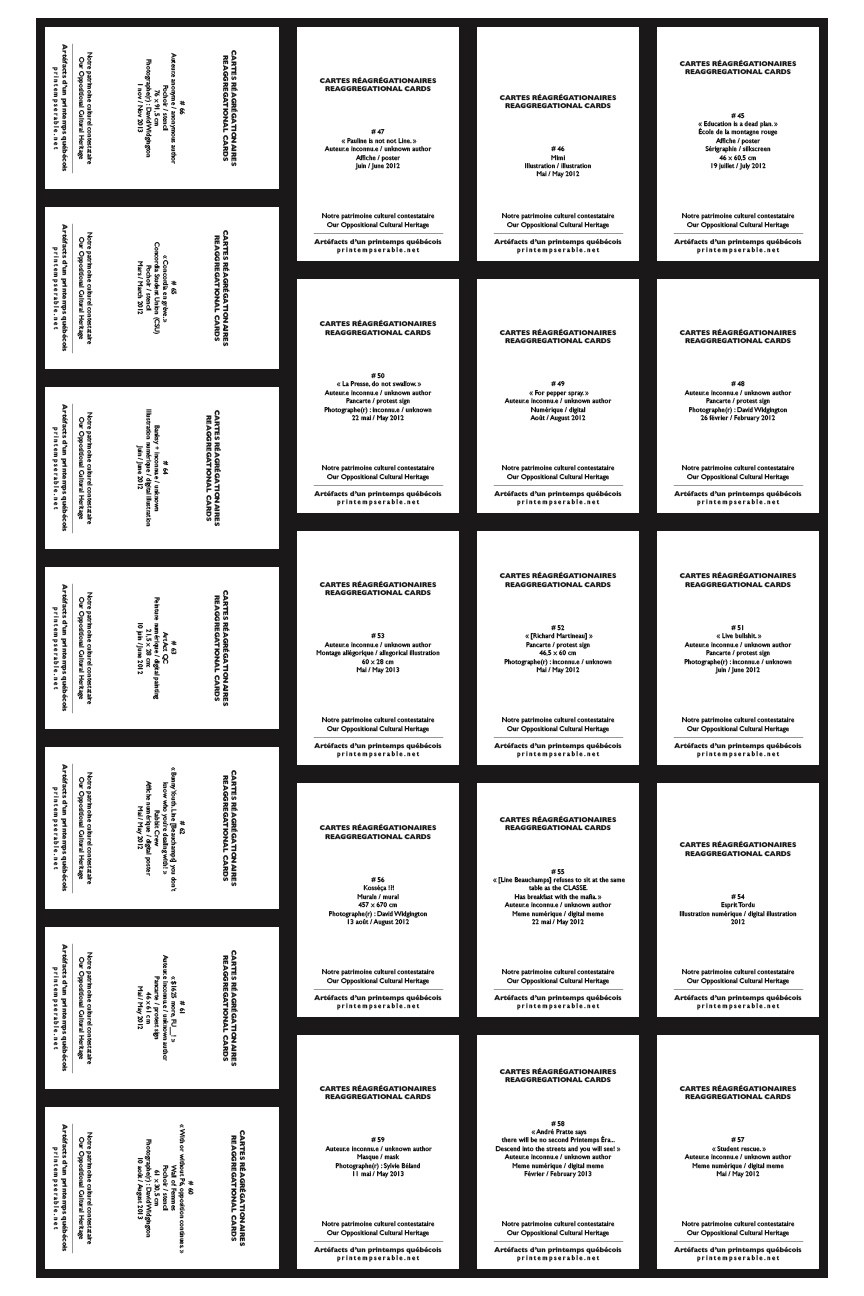244 cm x 609 cm
152 archived posters, wheatpaste, varnish / 152 affiches d’archives, colle de farine, vernis
2016
=====
EN
In March 2016. I spent 26 days in an artist residency at l’Auberge de la grève in Rivière Trois-Pistoles, Quèbec. The main creative project at the Auberge is the permanent installment of a poster mural on three walls inside the main entrance of the collective residence. A total of 152 posters were wheat-pasted onto the walls.
The posters were selected from my own personal collection and from the Centre de recherche en imagerie populaire (CRIP), an archive of posters of social movements from Québec (and elsewhere) with over 20,000 posters in its collection.
The mural’s creative process begans with a detailed measurement of the entrance to produce a 1:5.5 scale map of the walls’ surfaces, from the crown mouldings at the ceiling to the baseboards below and around the detailing of the door frames.
The second step was to tape onto the floor of the Auberge’s dance studio a to-scale outline of the wall surfaces, within which posters are placed until filled to satisfaction. Throughout the two-day process, residents of the Auberge were encouraged to comment and to make suggestions for placement and/or selection revisions. A borrowed camera hangs from the ceiling to produce a time-lapse video of the mural’s conception (see below) and to produce a photo of the final placement of the posters to use as a reference for the wheat-pasting.
The walls are sanded then washed before preparing the wheat-paste mixture: 4 parts water/1 part white flower/half part sugar (boil 3 parts water; mix flower to 1 part cold water; add flower mixture to boiling water; add sugar; stir for a 10 minutes; let cool; ready to use). 152 posters were glued to the entrance walls with the entire process taking two full days. After two days of drying, four layers of varnish was applied to the entire surface, leaving a smooth satin finish that is washable.
The Auberge de la grève is a collective living and learning space with 10-12 permanent residents. It is a space for popular education to share knowledge to other engaged communities. It is a space to create links between activists from both rural and urban areas. It provides a space to unite social and environmental struggles. It is also a space to replenish energy and to explore individual and collective well-being in an alternative living setting that is inscribed within the region’s community life. And it is a space to explore activism, art and collectivity.
«l’ Entrée de la grève » is a non-nostalgic activation of an archive that I argue will encourage the review past actions, the discussion of evolving issues and the advancement of arguments. The mural provides a reaggregational gathering space for activists to reinforce solidarity, to build collective confidence and, ultimately, to consider future oppositional performance of resistance and dissent against injustices.
Ideally, the oppositional cultural heritage activated within the « L’Entrée de la grève » mural, will help link past struggles with current/upcoming battles against injustices of all kinds. As a result, activists will be able to better confront the abuses of neoliberal capitalism and resist its systematic oppression.
=====
FR
En mars 2016 . J’ai passé 26 jours en résidence d’artiste à l’Auberge de la grève à Rivière Trois-Pistoles, au Québec. Le principal projet de création à l’Auberge est l’installation permanente d’une murale d’affiches sur trois murs à l’intérieur de l’entrée principale de la résidence collective. Au total, 152 affiches ont été collées sur les murs.
Les affiches ont été sélectionnées à partir de ma collection personnelle et du Centre de recherche en imagerie populaire (CRIP), une archive d’affiches de mouvements sociaux du Québec (et d’ailleurs) qui compte plus de 20 000 affiches dans sa collection.
Le processus de création de la murale débute par une mesure détaillée de l’entrée afin de produire une carte à l’échelle 1:5,5 de la surface des murs, depuis les moulures du plafond jusqu’aux plinthes plus bas et autour des détails des cadres de porte.
La deuxième étape a consisté à placer sur le sol du studio de danse de l’Auberge un contour à l’échelle des surfaces murales, à l’intérieur duquel des affiches sont placées jusqu’à ce qu’elles soient remplies à satisfaction. Tout au long de ce processus de deux jours, les résidents de l’Auberge ont été encouragés à faire des commentaires et à suggérer des modifications de l’emplacement et/ou de la sélection. Une caméra empruntée est suspendue au plafond pour produire une vidéo en temps réel de la conception de la fresque (voir ci-dessous) et pour produire une photo de l’emplacement final des affiches qui servira de référence pour le collage final.
Les murs sont poncés puis lavés avant de préparer le mélange de colle à la farine de blé : 5 parts d’eau/1 part de farine blanche/demi part de sucre (faire bouillir 3 parts d’eau ; mélanger la fleur à 1 part d’eau froide ; ajouter le mélange de fleurs à l’eau bouillante ; ajouter le sucre ; remuer pendant 10 minutes ; laisser refroidir ; prêt à l’emploi). 152 affiches ont été collées sur les murs de l’entrée, le processus complet prenant deux jours entiers. Après deux jours de séchage, quatre couches de vernis ont été appliquées sur toute la surface, laissant une finition lisse, satinée et lavable.
L’Auberge de la grève est un espace de vie et d’apprentissage collectif comptant 10 à 12 résidents permanents. C’est un espace d’éducation populaire pour partager des connaissances avec d’autres communautés engagées. C’est un espace pour créer des liens entre les militants des zones rurales et urbaines. C’est un espace pour unir les luttes sociales et environnementales. C’est aussi un espace pour faire le plein d’énergie et explorer le bien-être individuel et collectif dans un cadre de vie alternatif inscrit dans la vie communautaire de la région. Et c’est un espace pour explorer le militantisme, l’art et la collectivité.
“L’Entrée de la grève ” est une activation non-nostalgique d’une archive qui, je le soutiens, encouragera la révision des actions passées, la discussion des questions en évolution et l’avancement des arguments. La murale fournit un espace de rassemblement pour activistes afin de renforcer la solidarité, d’établir une confiance collective et, finalement, d’envisager de futures performances contestataires de résistance et de dissidence contre les injustices.
Idéalement, l’héritage culturel contestataire, activé au sein de la fresque ” L’Entrée de la grève “, permettra de faire le lien entre les luttes passées et les combats actuels/à venir contre les injustices de toutes sortes. En conséquence, les militants seront en mesure de mieux affronter les abus du capitalisme néolibéral et de résister à son oppression systématique.
=====
Collage design — 01:15 — 2016
=====
Collage installation — 01:47 — 2016
